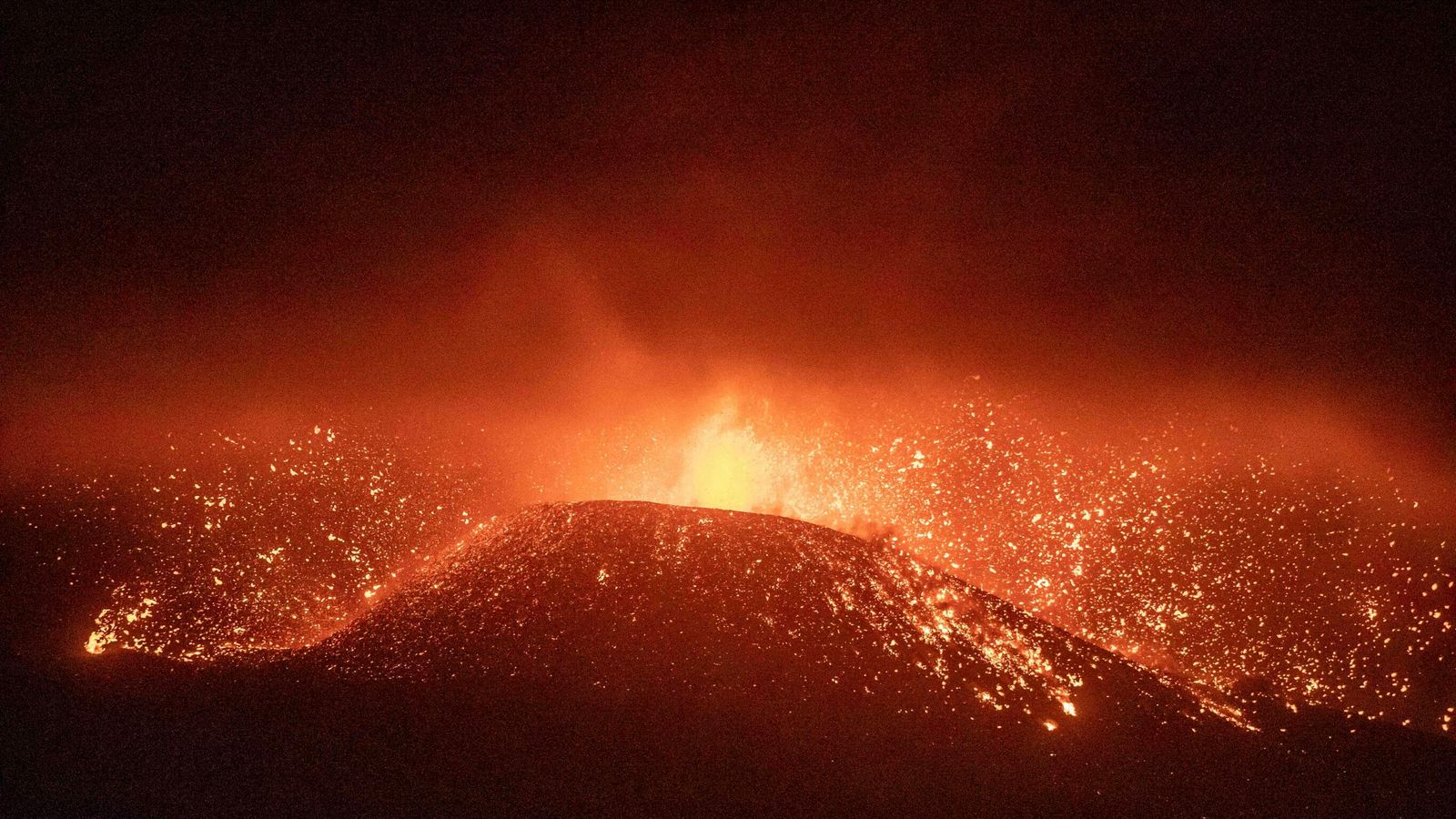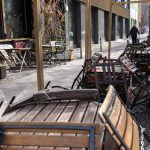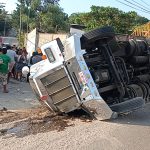A volcano that erupted on the Spanish island of La Palma in the Canary Islands is continuing to explode and spew out lava five days after it erupted.
Unstoppable lava flows have destroyed nearly 400 buildings on the western side of the volcanic island of 85,000 people and the authorities have warned of new dangers including toxic gases, volcanic ash and acid rain.
Where is the volcano in La Palma?
The volcano erupted along the Cumbre Vieja volcanic ridge in La Palma, one of eight volcanic islands in Spain’s Canary Islands archipelago, which sit off the northwestern coast of Africa.
The Canary Islands are popular with European tourists and the nearby island of Tenerife has one of the world’s tallest volcanoes, Mount Teide.
La Palma island itself is made up of two main volcanic complexes: a large one to the north and a smaller one to the south, which erupted on Sunday. The island last saw an eruption in 1971.
How did scientists know the eruption was coming?
La Palma volcano: Three more towns evacuated and firefighters forced to retreat amid intensifying volcanic explosions
La Palma eruption: Lava spread raises fears of more damage on Spanish island as it rises 50 feet in places
La Palma eruption: How bad is the damage – and why is lava meeting the ocean so dangerous?
Scientists had been monitoring a build-up of underground magma beneath La Palma for a week before the eruption and were able to warn of a possible eruption, allowing nearly 7,000 people to evacuate.
They had detected more than 20,000 earthquakes in an “earthquake swarm” which can indicate a coming eruption.
What caused the volcano to erupt?
Three days before the volcano erupted, the Canary Islands Volcanology Institute reported that 11 million cubic metres (388 million cubic feet) of molten rock had been pushed into the volcano.
Professor David Pyle, a volcanologist at the University of Oxford, told Sky News: “Magma is generated within Earth’s mantle and below La Palma that magma is probably being generated continuously at depths of 100km or so. Every now and then those magmas will collect and break through, pushing up into the shallow parts of the Earth’s crust.
“When the latest swarm of earthquakes started a week before the eruption began, scientists recognised they were happening at a shallower depth than they had seen in previous years.
“They were able to look at satellite images which showed deformation of the surface and they were very confident that from these they could recognise the movement of magma towards the surface.”
Please use Chrome browser for a more accessible video player
A 4.2-magnitude earthquake was recorded before the eruption, which saw two fissures open up and bright red magma bubble up into the air.
How has the eruption developed?
Earthquakes have continued and a new fissure opened on Monday following a 3.8-magnitude quake. Scientists have warned that new lava vents and cracks could emerge, putting new areas at risk.
Prof Pyle said scientists will now be measuring the amount of gas escaping from the volcano, checking whether the composition of magma changes over time and measuring the quantity of material that is being expelled to see how quickly the volcano is erupting.
“With these they will be forming an expert judgement in terms of what the trajectory is looking like in terms of the eruption, whether it is waxing or waning,” he said.
“In this crisis they are deploying all the tools they can to try and work out what is changing during the eruption. And that will give them the clues in terms of whether or not to expect the activity to last for days, or weeks, or months.”
Please use Chrome browser for a more accessible video player
Officials in La Palma have recorded 1,130 tremors in the area over the past week as the volcano blasted molten lava into the air.
The explosions have propelled ash almost 15,000ft into the air, according to the Guardia Civil police force. Two rivers of lava have flowed slowly down the hillside, consuming houses, banana farms and infrastructure.
How long could the eruption last?
Scientists are unclear about how long the eruption could last, with estimates ranging between weeks and even months.
The previous eruption in 1971 lasted for just over three weeks. The last eruption in the Canary Islands happened underwater off the coast of El Hierro island in 2011 and lasted for five months.
Professor Mike Burton, a volcanologist at the University of Manchester, told Sky News that while scientists were able to predict the eruption, knowing how long it could last was “the tricky bit”.
“It’s great that we can see when something like this is coming, but once it has started it is quite hard to be clear about how it is going to evolve.
“I think the best thing we can do is watch and look for signs of waxing and waning, increasing and decreasing activity.
“The last eruption went on for about three months, but every eruption is different. This one appears to have started with a higher lava eruption rate than the 1971 eruption, so already it seems to be more powerfully supplied.
“That might mean it goes on much longer, but you have to be cautious about making any deterministic predictions. We really need to wait and see what nature does.”






















